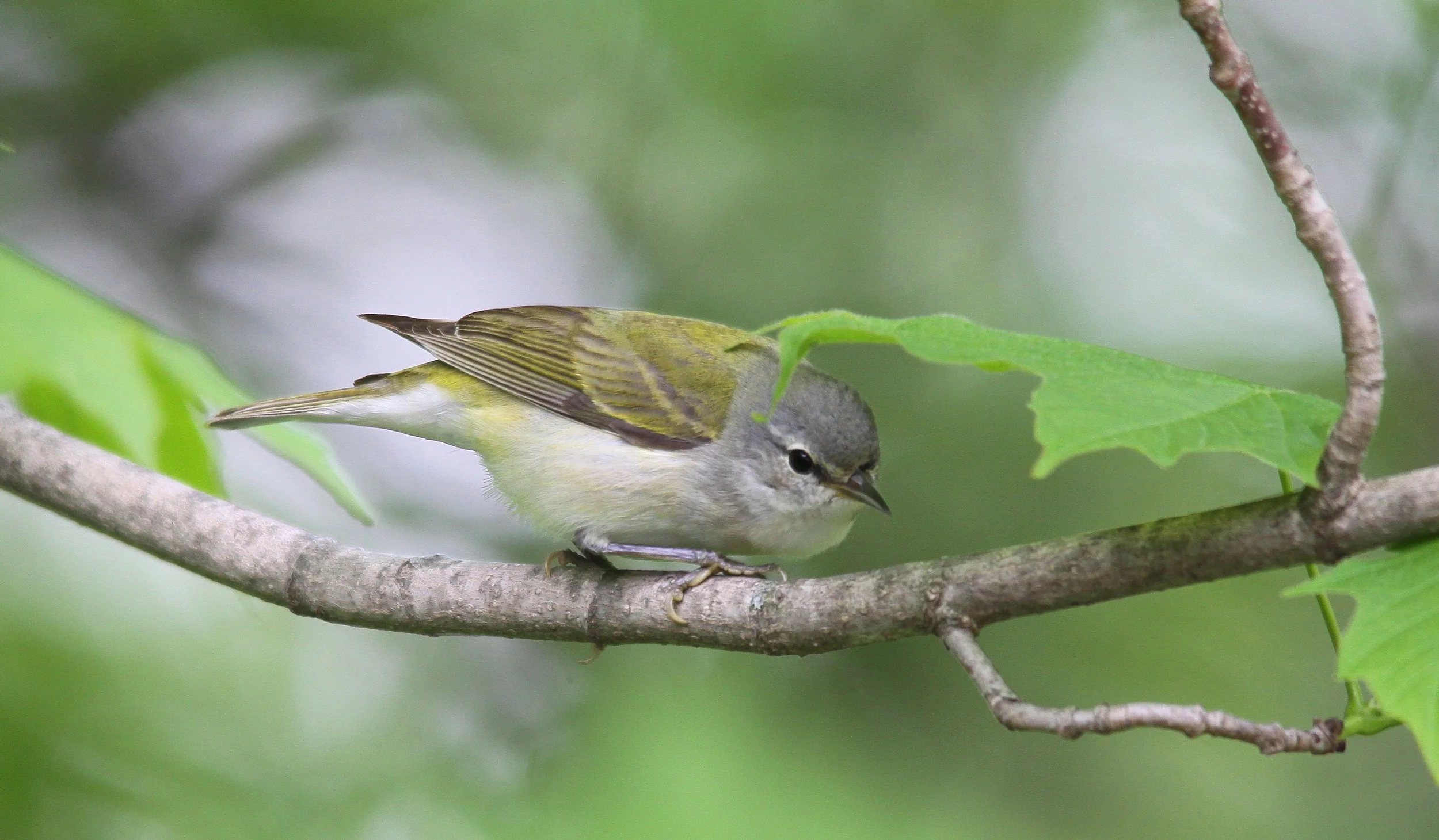Photo: Tennessee Warbler, Ben Cvengros/Audubon Photography Awards
Libby Lyons, President
Fall migration is starting! I saw that someone had reported a Tennessee Warbler in northern Virginia just the other day, which got me musing about this migration season -- the challenges the birds face, how to make it safer for migrating birds and how to enjoy the spectacle of migration.
Although Spring’s northward-migrating birds usually get more attention because of their bright colors and breeding season songs, many of the same birds pass through our region on their way south, though in much drabber garb. Joining the round-tripping adults are the young-of-the-year birds undertaking their first migration.
Migration can be one of nature’s most spectacular phenomena. Each year it presents us the opportunity to see these amazing creatures for just two brief periods. Alas, it is also one of the most physiologically demanding times in a bird’s life. Several factors can make it even more taxing.
Many of the birds flying south over the U.S. faced another summer of severe Canadian wildfires, particularly in northern forests where many of them breed. The fire season is not yet over, but 2025 has already become the second worst year for Canadian wildfires, second only to 2023. Fire has long been a natural part of forested ecosystems, but the frequency, severity and size of the fires has been increasing recently. The smoke and fire can kill adults, nestlings and young birds if they are trapped in a rapidly moving fire, or they may be harmed by inhaling smoke-filled air. The fires also can kill their food sources and alter their habitats. For example, frequent fires can change the age structure of a forest and an area’s tree species – a particular hazard for species that nest in old-growth forests. Fires in their migration paths also can require long detours in an already arduous journey. So, even before they reach our area, having flown perhaps 1,000 miles, many migrants have had to overcome significant hazards. Learn more about the impact of Canada’s wildfires on Birds Canada’s 2024 post on how boreal birds respond to forest fires.
Young birds’ inexperience also can compound the long-distance challenge of migration. Many young birds, as well as experienced adults, can be distracted easily by human light sources, causing them to waste time and energy. While we can’t do anything about Canada’s wildfires, we can do something to make it safer for birds to migrate through our area. Please turn off your outdoor lights from now through November 30, especially any uplighting! NVBA’s website provides valuable information about reducing risk for birds in its Lights Out for Birds campaign.
So how can you enjoy this fall migration? I will be birdwatching locally, but I also will head to Cape May, New Jersey in late September with birding friends. The geography of that area, with the Cape May peninsula protruding into the Delaware Bay, serves to concentrate and funnel the southbound birds. Not only can I see many songbirds in forests and fields there, but there also will be scores of raptors in the air. If you ever have the opportunity, a Fall visit to the Cape May Point State Park's Hawkwatch platform is a treat, with the local experts calling out the dozens to hundreds of raptors of more than a dozen species flying overhead.
Closer to home, our local parks once again will be filled with migrating songbirds, but they will be quieter and not so brightly colored. When I started birdwatching many decades ago, I found the section on warblers in my Peterson’s Field Guide to the Birds quite daunting, particularly the four pages of “Confusing Fall Warblers.” Now that I am better at identifying Spring warblers from their colors and plumage patterns, I relish the challenge of recognizing patterns without the color. Ironically, that Tennessee Warbler spotted this week is so drab that its plumage doesn’t much vary seasonally!
Connecticut Warbler at Upton Hill Regional Park, Matt Felperin
And I will be watching for one species we see only in the Fall. If I’m lucky, I might catch a glimpse of the rare, skulking Connecticut Warbler, which migrates up the Mississippi River valley in the Spring. And to witness raptor migration closer to home, I plan to visit Snicker’s Gap located between Loudoun and Clarke Counties, only 45 miles from my home in Arlington. The Virginia Department of Wildlife Resources has conducted a yearly count of migrants at Snicker's Gap Hawk Watch since 1990. Its website provides directions as well as useful information on the best times to visit and what you may see.
So join me in taking steps to protect our fall migrants and enjoying the spectacle.


